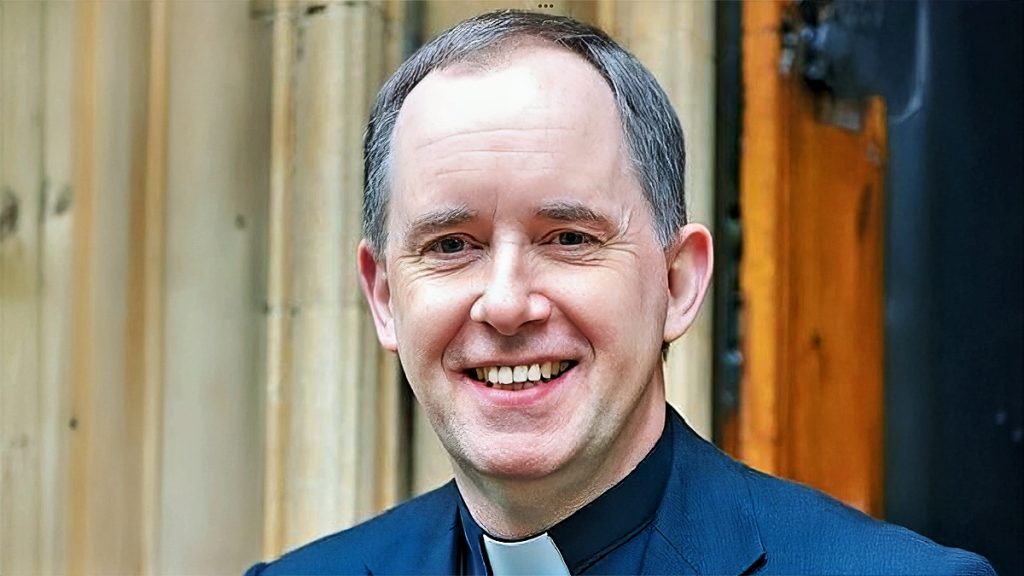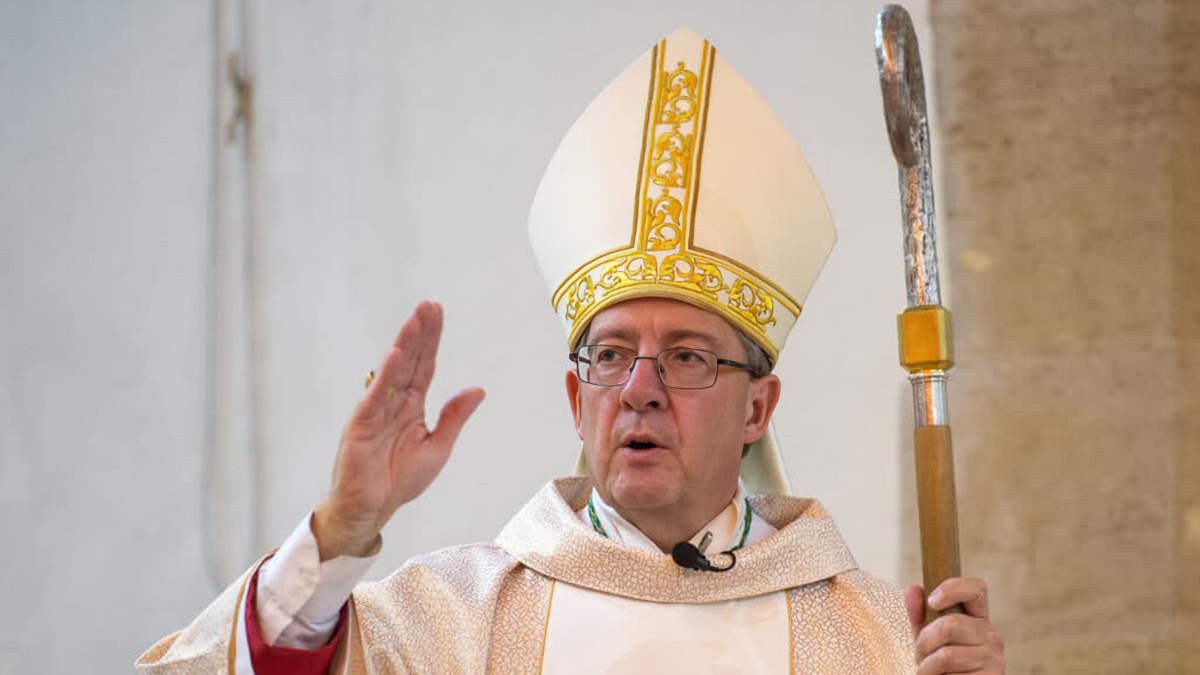The installation of a new archbishop is a relatively rare event for a diocese, and so it was heartening to see how much effort and careful preparation had been put into the ceremony in Liverpool Metropolitan Cathedral in May for the new archbishop, John Sherrington, who replaces (now emeritus) Archbishop Malcolm McMahon (installed in 2014).
The entire ceremony is still available for viewing.
It was made evident that there was a clear desire to promote the “full, conscious and active participation by all of the people” that is the very heart of the opening document of the Second Vatican Council, Sacrosanctum consilium, – not only through the selection of texts and prayers, but also through the music, and most particularly by the use of processions and the placing of bishops, priests and laity as a united assembly around the altar table.
With its striking brutalist concrete and glass forms, topped by an exuberant crown of stained glass, this cathedral places the altar at the very centre, not only of the building, but symbolically of the entire archdiocese.
This is a deliberate choice, which also means that the entire congregation of several thousand gathers around the altar in a huge circle.
It represents, architecturally, a clear statement of acceptance of the novus ordo as envisioned by the Fathers of Vatican II and of Pope St Paul VI and his successors.
Everyone, including the presider, stands facing the altar, the cross and the rest of the congregation.
It is, as far as sightlines go, an architectural choice which invites us to reflect that we are all in the presence of Christ in the mode of presider, food, word and the assembly, and which calls us to respond accordingly through our acceptance of one another and being many but united in Christ.
The members of the music department at the Cathedral is already greatly admired through their live-stream of Mass, and for this ceremony they outdid themselves.
We were offered a carefully selected repertoire which not only showed off the abilities of the cathedral’s excellent choir, but also allowed for a most effective sung contribution from the very large congregation of laity, priests, bishops and ecumenical guests.
Every word of the texts in Latin had English translations provided in the service book, along with clear plainchant notation. The melodies of the psalm responses and hymns were printed before the first verse. The contemporary settings of the Mass chants were easy to join in with, even if for the first time of singing (for this participant).
With its combination of ancient rituals (such as the litanies, the presentation of the mitre and crozier and the invitation of the new archbishop to sit in his cathedra chair) as well as the appropriate use of Latin and English music, classical as well as contemporary, and with bidding prayers that expressed the hopes of all in the archdiocese for the new archbishop and for all in the assembly, I also was able to give thanks for the renewal of the liturgy in the decades following Vatican II.
It was heartening to participate in a ceremony that was such a success in every possible way.

- Fr Andrew Cameron Mowat SJ, a priest of the British Province of the Society of Jesus, a liturgist and parish priest of a large London parish.
- Flashes of Insight is an international publication. The editorial policy is that spelling reflects the country of origin.

